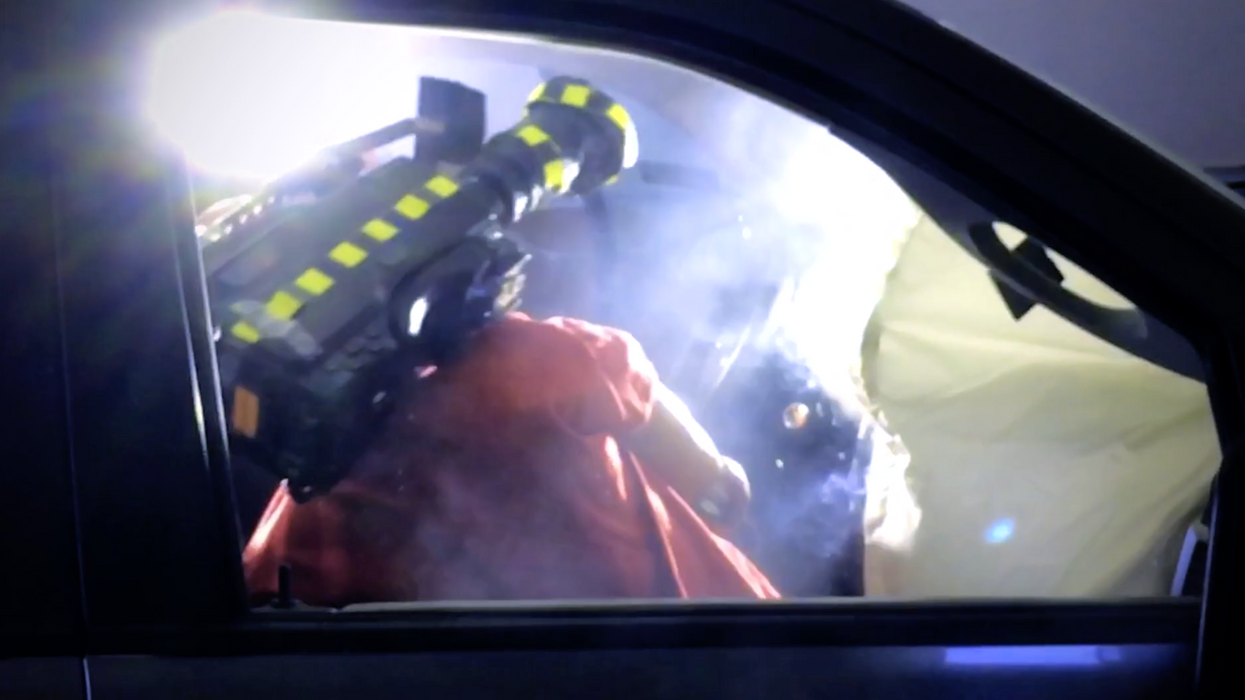Watch: This Terrifying Video Shows You Exactly How Not to Shoot While Driving
The USC and Local 600 bring us a study that will make you think twice about handheld filming in vehicles.

Camera operators on indie productions end up stuffing themselves into all sorts of places to try to get the shot. Most of the time there is a camera on your shoulder, you don't worry about it crushing your skull.
However, as a recent study from the International Cinematographers Guild (IATSE Local 600) and USC Keck School of Medicine demonstrates via exceptionally effective video, that camera can turn into a projectile head smasher in the event of an accident triggering your airbags.
One thing to remember is that doing something while you are shooting movies is always, by definition, less safe than the equivalent activity when you aren't shooting. Many people think of driving as reasonably safe (even though it's way more dangerous than flying, for instance), but when you are shooting a scene, if actors are performing, that alone is distracting and decreases safety. Add into that driving on abnormal routes, trying to time out driving to go past a certain background at a certain time, and the danger increases exponentially. Routine processes can actually increase safety when executed correctly, but film sets are non-routine environments where it's likely that the driver/actor would be crying, yelling, or both while having a DP in the back say "Hey, can you get closer to the car in front of you, I like the light of their taillights in your eyes." It's dangerous.

Even if you are working with a vintage vehicle without airbags, the positions operators often contort into in order to get the shot are generally dangerous in and of themselves. Add on top of that the potential of an explosive cushion meant to protect you pushing a camera into your skull and it's a scary situation all around. Don't forget that it isn't just the operator in danger; with the right accident and an airbag pushing the camera it can also go flying into the back seat or potentially even the driver's seat, wreaking havoc as it goes.
Here are a few points that the study makes that are particularly relevant to camera ops who are "free driving," or shooting handheld in a moving car:
- The passenger side airbag is physically larger and deploys with more force than the driver side airbag which is situated farther away from the occupant.
- The National Highway Traffic Safety Administration (NHTSA) guidelines state that sitting within 10 inches of an airbag is dangerous.
- Most vehicles now have weight sensors in the seats that help determine how much force an airbag should use to deploy. Sitting with a camera on a shoulder will therefore result in a higher weight reading and cause the airbag to deploy with greater force than necessary.
While it might seem expensive to hire a driver and tow a car, it actually won't cost nearly as much as you think it will, and you can generally get competitive bids in almost any market. We love doing things the guerilla way when possible, but one place to never go guerilla is safety.
For more information and study findings, check out the IATSE Safety page.











